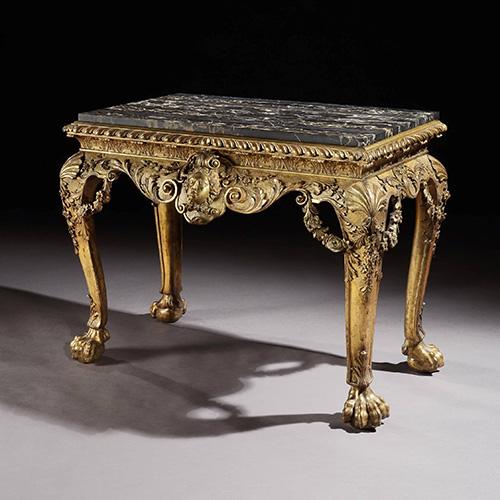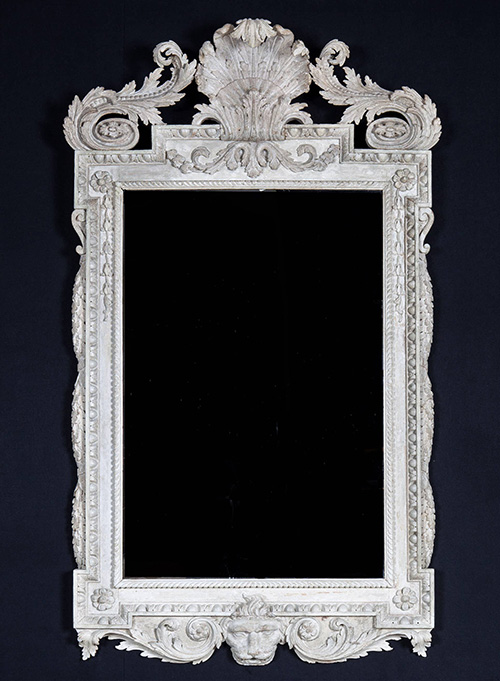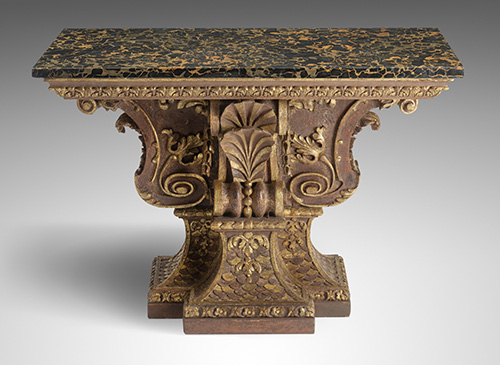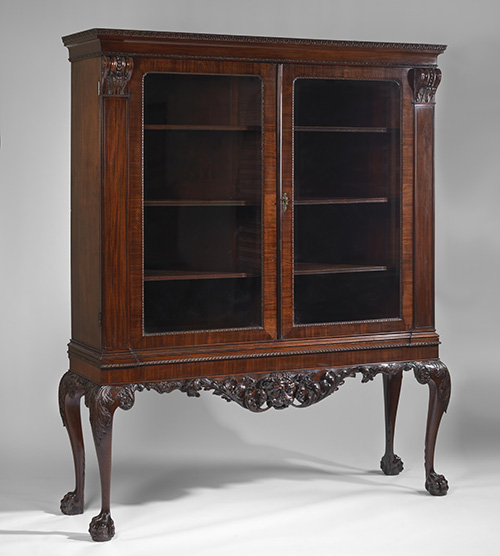

The foremost architect of the early Georgian era, through his country houses, furniture design and landscape architecture, William Kent determined the design aesthetic that would define the Hanoverian period.
Born in 1685, Kent was actually christened William Cant, to William and Esther Cant of the town of Bridlington in Yorkshire’s East Riding. Having shown an early enthusiasm for painting and the arts, William’s professional career began in humble circumstances as apprentice to a signwriter and coach painter.
His fortunes were transformed in 1709 when a group of Yorkshire gentlemen agreed to send Kent to further his studies in Rome, as was the fashion at the time. Over the next 10 years, William studied the Old Masters in Rome and learned etching and engraving, whilst travelling the cultural capitals of Italy in search of inspiration.
He also forged friendships with many wealthy young noblemen undertaking their Grand Tour, who in time would become his patrons and clients. Notable travelling companions included fellow Yorkshireman Richard Boyle, 3rd Earl of Burlington and Thomas Coke, later 1st Earl of Leicester.
It was during a 1714 tour of Northern Italy with Coke that William first came across the palaces at Vicenza designed by the Italian Renaissance architect Andrea Palladio. Based on the principles of classical architecture, the Palladian style offered a pleasingly simple symmetry that struck accord with the pair.
 This simplicity was in stark contrast to the ornate English Baroque fashion that had dominated British architecture since the mid-17th century. The Palladian style also evoked fond memories of the Grand Tour amongst wealthy young landowners keen to make their own mark on the country estates of their forefathers.
This simplicity was in stark contrast to the ornate English Baroque fashion that had dominated British architecture since the mid-17th century. The Palladian style also evoked fond memories of the Grand Tour amongst wealthy young landowners keen to make their own mark on the country estates of their forefathers.
Returning to London with Burlington in 1719, his close friend would not only sponsor many of Kent’s earliest projects but also used his immense social influence to spread Kent’s growing reputation, earning countless important commissions.
One of his earliest and career defining works saw a virtually unknown Kent tasked with the painted decoration of King George I’s Cupola Room at Kensington Palace. Kent painted the domed ceiling in gold and blue, terminating in a Star of the Order of the Garter panel.
The King was so delighted that William was commissioned to oversee the decoration and picture hanging of all the Royal apartments at the Palace. His endeavours would be rewarded with the honour of Principal Painter in Ordinary to the King, in 1740.
Meanwhile, Kent and Burlington worked together on the design and décor of Burlington’s magnificent Palladian villa at Chiswick House, completed in 1729. Kent also designed the interior decoration for Burlington House which would dictate the fashion in furniture for a generation.
Although by no means a horticulturalist, William also designed the gardens at Chiswick House, which are one of the earliest examples of the English landscape garden. Shunning the regimented, architectural style of gardens made popular by the French, Kent opted for a more informal pastoral motif.
 Rolling lawns and groves of trees, were offset with the addition of lakes and classical architectural features such as temples or bridges. Later championed by Capability Brown, the style that would rapidly become fashionable throughout 18th century Europe.
Rolling lawns and groves of trees, were offset with the addition of lakes and classical architectural features such as temples or bridges. Later championed by Capability Brown, the style that would rapidly become fashionable throughout 18th century Europe.
As it was common at the time among the landed gentry to keep a town house and a country seat, William’s services were soon in great demand. With his close friend Burlington inviting the great and the good of Hanoverian society to Chiswick and Burlington House, Kent could choose from many of the most ambitious building projects of the day.
These included designing the ceilings and furniture for Prime Minister Sir Robert Walpole at Houghton Hall, Norfolk, the interiors at Stowe House, Buckinghamshire, which now houses Stowe School, and the interiors at Stanwick Park, Yorkshire, home of the 1st Duke of Northumberland, sadly demolished in 1923.
Remarkably, given that Kent is largely celebrated for his architectural prowess, he did not actually begin practising until deep into his forties. As a firm favourite of both George I and his heir George II, William received a number of important architectural commissions beginning with the Royal Mews at Charing Cross in 1732. Housing the Royal stables and known commonly known as the King’s Mews, the site was demolished in 1820 to make way for the construction of Trafalgar Square.
 Two of Kent’s most significant architectural works that have survived the developer’s wrecking ball are the Treasury Building in Whitehall, completed in 1737 and Horse Guards in Whitehall, which was commissioned in 1745 and completed after William’s death in 1848.
Two of Kent’s most significant architectural works that have survived the developer’s wrecking ball are the Treasury Building in Whitehall, completed in 1737 and Horse Guards in Whitehall, which was commissioned in 1745 and completed after William’s death in 1848.
Perhaps the finest existing example of Kent’s architectural prowess is Holkham Hall, Norfolk, seat of William’s old friend Thomas Coke, Earl of Leicester. Coke, Burlington and Kent would all collaborate on this masterpiece of Neo-Palladian architecture, with work on the 1500-acre park commencing in 1729.
Tragically a predilection for drinking and gambling, coupled with a disastrous investment in the South Sea Company saw Thomas Coke incur significant financial losses, delaying the construction of the estate by more than 10 years. Neither Coke, Burlington nor Kent would live to see their remarkable vision completed in 1764.
Ironically, Coke’s pecuniary failings would ensure the preservation of Holkham Hall’s Palladian majesty. His successors were so burdened by debt that they were unable to make any of the fashionable alterations to the property that befell many designs of the period. Consequently, Holkham Hall remains perfectly intact as a lasting memorial to the early Hanoverian era’s master architect.
Click here to view a selection of Kentian items currently available from BADA members.

